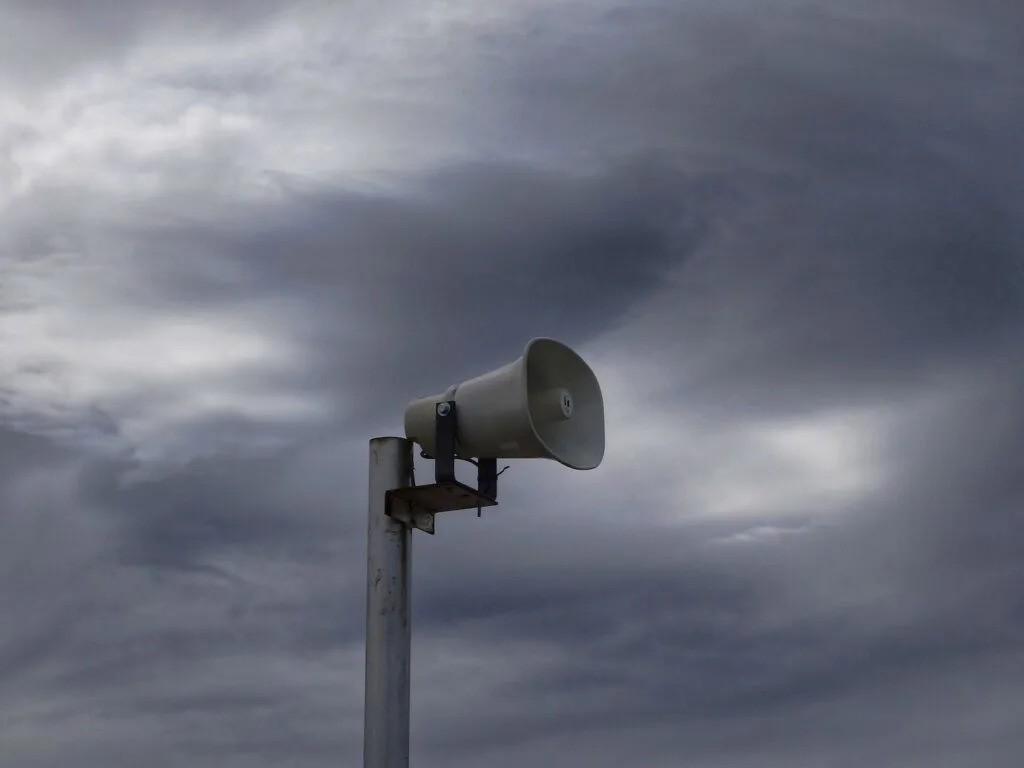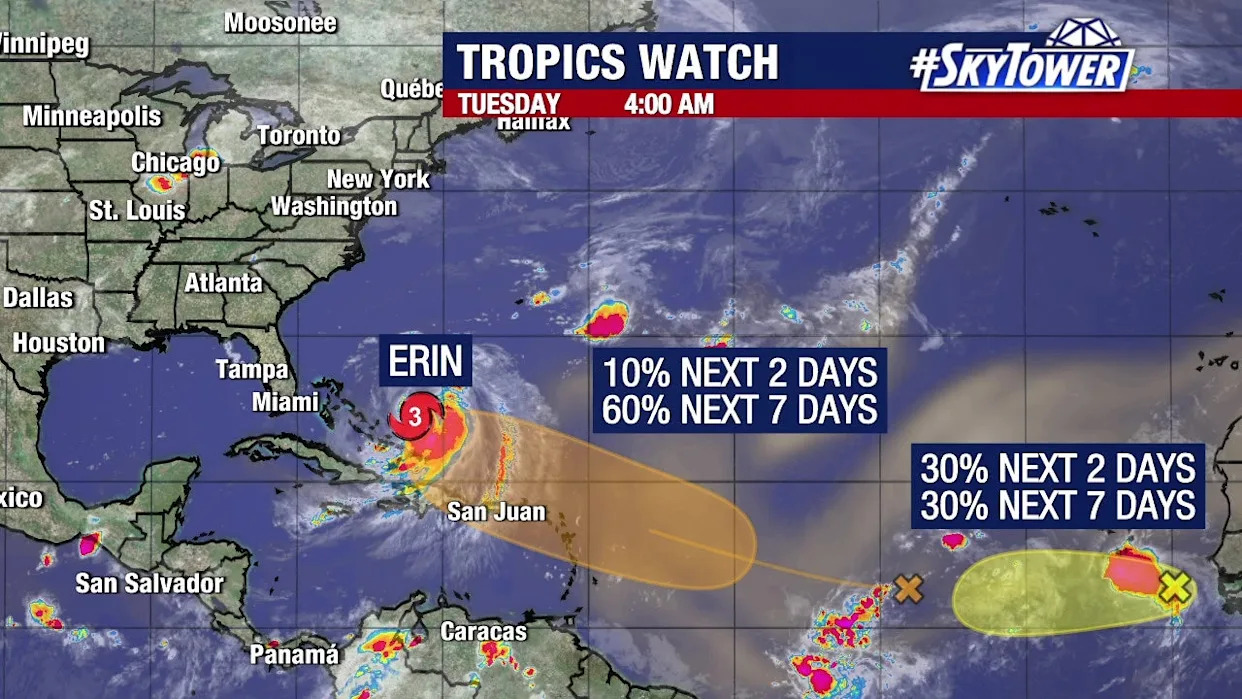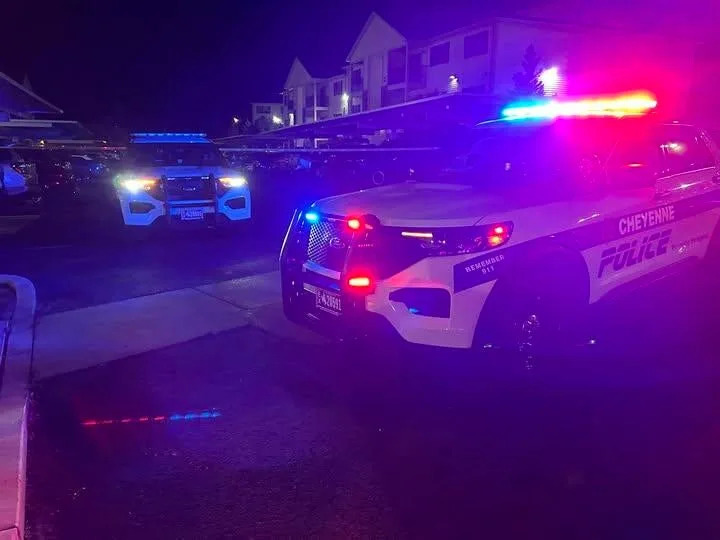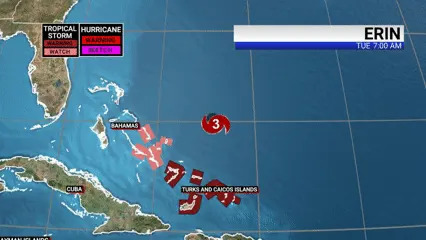
Alif Ramadhan/Getty Images
As tornadoes become increasingly common across Louisiana, the city of New Orleans is considering a siren system to help people get to safety faster if a twister is approaching.
Louisiana has been hit by more than 100 twisters since 2023, many of which have occurred at night and sometimes during hurricanes. Though most of those tornadoes caused relatively little damage, two people were killed last May by high winds and severe weather across the state. The West Bank of New Orleans and the community of Arabi in St. Bernard Parish were both struck by tornadoes twice in 2022, the second of which killed one.
Currently, no parish in the state has a comprehensive outdoor warning system, commonly known as a siren system, to warn people to retreat indoors if a storm is approaching or other public emergency is taking place. Siren systems are common across “Tornado Alley” — Texas, Oklahoma, Nebraska and South Dakota — but in recent years, tornadoes have been shifting eastward, leading local emergency management officials to question whether it’s worth installing sirens in Louisiana next.
SUBSCRIBE: GET THE MORNING HEADLINES DELIVERED TO YOUR INBOX
Collin Arnold, the director of homeland security and emergency preparedness for New Orleans, said he has been “brought around” to the idea of installing a siren system as the technology has progressed in the last several years.
“We typically associate outdoor warning systems with just sirens or tones, but they’re advanced to the point now where you can actually verbalize messages through them,” he said.
In New Orleans, a siren system could also be used to alert people in situations ranging from imminent coastal flooding to active shooter threats, Arnold said. He pointed to recent natural disasters in the state, such as the Arabi tornado in 2022 — the strongest in the state’s history — as well as the mass floods in Texas that killed at least 136 in early July.
“I have thought since that it is worth looking into,” he said.
Arnold said he has been in talks with several national outdoor warning system manufacturers and estimates the cost of installing a comprehensive siren system across Orleans Parish to be around $10 million.
Installing sirens on telephone poles or street lights, which already have a power supply connected, could minimize the cost, according to Arnold, who said he is asking potential siren contractors to look into the possibility of using existing infrastructure as a cost-saving measure.
Ryan Dean is the founding partner and chief revenue officer at the outdoor warning systems company OmniWarn, one of the vendors Arnold said he contacted. Dean said the siren itself typically affects the total cost more than where it is installed.
“Sometimes we’ll start with sirens at all of the parks, and then we’ll put them at all the schools, and slowly expand it out like that,” he said. “However…when I show [city officials] the price tag to do it all at once, they’re pleasantly surprised with how inexpensive it is.”
Dean said OmniWarn charges between $30,000 to $50,000 per siren, each of which is designed to last decades. OmniWarn recently installed 30 sirens for $1.3 million in the east Texas city of Pasadena.
Whether or not the city moves forward with installing sirens, Arnold said New Orleans residents should make sure they are subscribed to NOLA Ready text message alerts to get up-to-date information on any public emergency, from tornadoes to acts of terrorism.
How effective are sirens?
Debra Campbell, chairperson for A Community Voice, a local nonprofit for social and economic justice, has been calling on New Orleans to install an outdoor warning system since 2017.
Campbell said city officials who claim text message and social media alerts are enough of a warning fail to recognize that many people do not have access to a cell phone. Campbell’s son, who has autism, would be far more likely to listen to a siren than a text alert, she said.
“My son will probably not pay attention to an alert on the phone, but if you give him a deafening siren, then he’ll be aware that something is going on in the area,” she said.
The city of Dallas is home to a comprehensive outdoor warning system that has been periodically expanded and updated over the years.
John Patterson has managed the Dallas siren system for nearly 10 years. He called it “just one tool in our warning toolbox, if you will.”
Patterson noted that outdoor warning systems can be used for a variety of public emergencies, from hail, high winds and other extreme weather, to chemical spills involving toxic fumes. When the sirens are activated, the office also posts alerts on social media.
“If people hear it, they can’t assume that it’s a tornado issue,” he said. “It could be anything else. That’s why we tell people, when you hear it, go inside and turn on local radio and television news and find out what the situation is.”
The sirens are tested once per month, weather permitting, to avoid confusing the public. Patterson said the city still occasionally gets calls from people who aren’t sure whether the test is real.
Still, sirens have their limitations, said Samantha Montano, associate professor of emergency management at the Massachusetts Maritime Academy, who began studying disaster relief after visiting New Orleans in the aftermath of Hurricane Katrina.
“Sirens don’t do as much as people think they do,” she said. “They tend to be more expensive and not quite as effective as the public thinks they are.”
Montano pointed out how sirens can generally only be heard when outside, and sometimes can’t be heard over the loud sounds of a storm. She said focusing on more fundamental issues, such as the lack of tornado shelters across New Orleans, would be a more effective preparation tactic.
A statewide question
Although nuclear power plants and universities across the state have used localized outdoor warning systems over the years, Orleans Parish would be the state’s first parishwide public siren system.
It’s up to parishes as to whether or not to invest in such a system, said Mike Steele, communications director with the Governor’s Office of Homeland Security and Emergency Preparedness, though the state can assist with obtaining federal funding.
In the aftermath of the Arabi tornado, the state legislature put together a task force in 2023 for emergency managers across the state to discuss future tornado preparedness. There, members of the public shared their desire for the city to invest in an outdoor warning system, Arnold said.
In Lafayette Parish, emergency management officials are sticking with a text message notification system as the primary tool to notify residents about tornadoes and other emergencies, given cost constraints.
“If we had all the money we wanted, yes, obviously we’d have sirens,” said Chad Sonnier, the parish’s top emergency management official. “However when you have limited funds, you try and get the most bang for your buck, and we think the system we have now is the way to go.”
Last June, a tornado hit Youngsville, a city of 19,000 people located in the southern part of Lafayette Parish, damaging trees, trailers and power lines.
Scott Gilbeaux, who lost his trailer home in the Youngsville twister, said he only learned about the tornado when he heard a loud sound similar to a train whistle close to midnight — a tell-tale sign of an impending tornado — and turned on the TV to see that one was on the way.
“Thank god I was awake,” Gilbeaux said. “We don’t have [sirens] back here — we’re in the country.”
Gilbeaux has since managed to get back on his feet with the help of family and friends. He said that with or without a siren system, at the end of the day, there is little that can be done ahead of a devastating natural disaster.
“I’m not prepared,” he said. “What’s going to happen is going to happen.”
In New Orleans, a “robust” public education program, including social media posts and coverage from news outlets, would be needed if the city were to install and periodically test an outdoor warning system, Arnold said.
Regardless of the views of the public or disaster relief officials, Arnold said the decision-making power on whether or not to invest in an outdoor warning system lies elsewhere. Arnold said he has spoken to Mayor LaToya Cantrell and other city leaders about installing sirens and that the response has been positive. In a statement, the Mayor’s Office said the city is looking into the “feasibility, value and potential deployment of such a system.”
“Ultimately it will be the elected leadership of the city — the mayor and the city council — that will determine from the will of the voters what direction we want to go with this,” Arnold said.
SUPPORT: YOU MAKE OUR WORK POSSIBLE
This article first appeared on Verite News New Orleans and is republished here under a Creative Commons Attribution-NoDerivatives 4.0 International License.









Comments